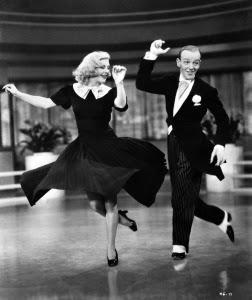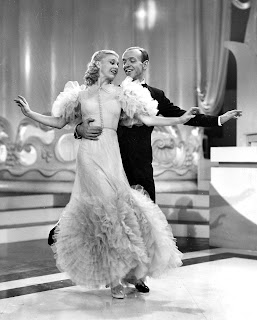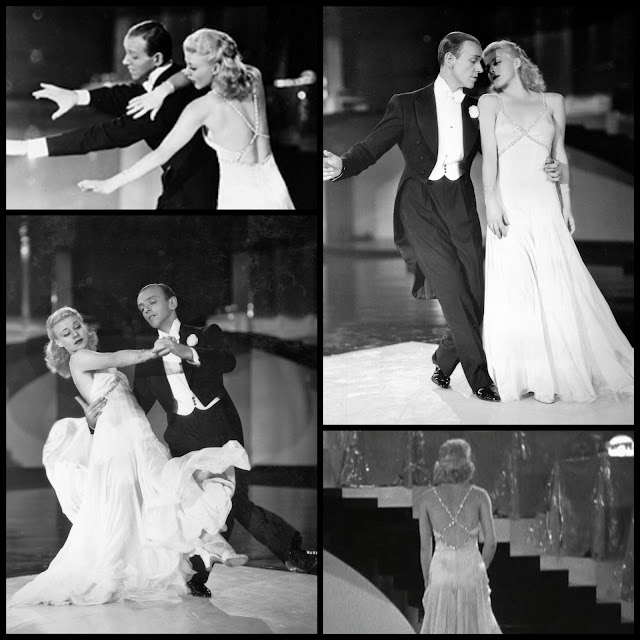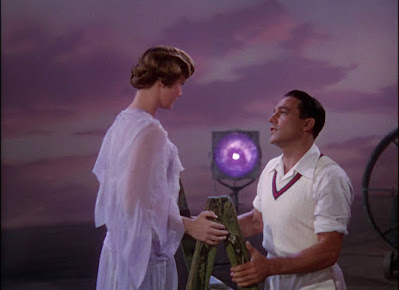Dress in Detail: the "Never Gonna Dance" Dress
This article is part of what I’m calling the “Dress in Detail” series, where I’ll analyze one dress
from a film. Those who know me know that I love to sew and would, time permitting, probably
recreate as many of these costumes as possible. For now I'll satisfy myself with writing about them.
Each article will have three sections: the Scene, the Designer, and the Dress itself. The Scene - a little
context about where this dress is featured in the film. The Designer - who made the dress, and a bit
about them. And The Dress - all the meticulous research I could gather about the garment, for those
like me who appreciate all the tiny little details.
So here I present to you the first lovely entry in this series: the "Never Gonna Dance" dress.
The Scene
You can’t go wrong when it comes to the Fred Astaire/Ginger Rogers films, but Swing Time is
one of the best. (I say this not just from personal opinion, but from those of many dance and film
historians as well as box-office records and the Top Ten Money-Making Stars poll for 1936. Did I
mention meticulous research?) Swing Time concerns Fred, a dancer and a gambler, who has to win
$25,000 to prove his devotion to Betty Furness before her father will allow a wedding. While in
New York to find the money, Fred runs into Ginger, a dance teacher, and promptly forgets all about
Betty Furness. Jerome Kern and Dorothy Fields wrote the score, including such well-known songs as
“Pick Yourself Up”, “A Fine Romance”, and the Oscar-winner “The Way You Look Tonight”.
And then there is “Never Gonna Dance”. The scene takes place at night in the Silver Sandal,
based on the Silver Slipper nightclub of 1920s New York. Ginger has discovered the existence of Betty
Furness and decides she must marry Georges Metaxa, the nightclub bandleader. Fred knows he must
return to Betty, the “girl back home” - and so everything has come to an end. The premise of the song
is such: if Fred can’t dance with Ginger, he won’t dance at all - he’s, well, never gonna dance. It is a
rather heartbreakingly romantic song that makes for one of the most beautiful and meaningful of
the Fred-and-Ginger dances.
The Designer
Bernard Newman began his career as a window dresser for Bergdorf Goodman and worked his
way up to head designer. Famous film stars began to wear his designs and he found a position at the
RKO Radio studio. Newman designed for many of Ginger Rogers’s films, dating back to the
Pre-Code Rafter Romance (1933). His first Astaire/Rogers film was Roberta, in 1935, but he is best
known for his work in Top Hat and Swing Time. The gowns in this film are *gorgeous*.
Some highlights:

"Pick Yourself Up"

"Waltz in Swing Time"


And if you needed more proof...
The Dress
Here are as many details as I could find.
The dress fabric is silk georgette, a lightweight fabric that drapes wonderfully. It is slightly
stretchy and crinkles due to the way it is woven, like a crepe fabric. The skirt is two circles of silk, cut
on the bias. Bias-cut dresses are a trademark of the 30s - all of the flowy silk evening gowns were cut
this way. The technique simply entails cutting the fabric on the diagonal “bias” grain to utilize the
stretch and drape as opposed to on the straight grain.
Twenty-two (!) panels make up the skirt, sewn
together with French seams (seams sewn, turned inside out, and sewn again to encase raw edges). The
typical rule for skirts is the more panels or gores, the “spinnier” they will be. This dress was going for
maximum spin.
The hem is weighted with little coin-size plastic weights, which is another reason
why it twirls so nicely while Ginger dances. Many of her dancing dresses were weighted similarly.
The fabric was light pink and appears white on-screen. Light pinks and blues were frequently
used in black-and-white films in place of white as they photographed better. Many of the sophisticated
black-and-white film wardrobes were actually strange colors for this reason!
The dress has an under-structure similar to a 1920s bathing suit (close-fitted with short shorts),
which is sometimes slightly visible under the sheer fabric.
Much of the information from this post came from this article wherein a man shares his research
on the dress in order to have it recreated.
Thank you for reading, and check back soon for more Dress in Detail articles!





Comments
Post a Comment